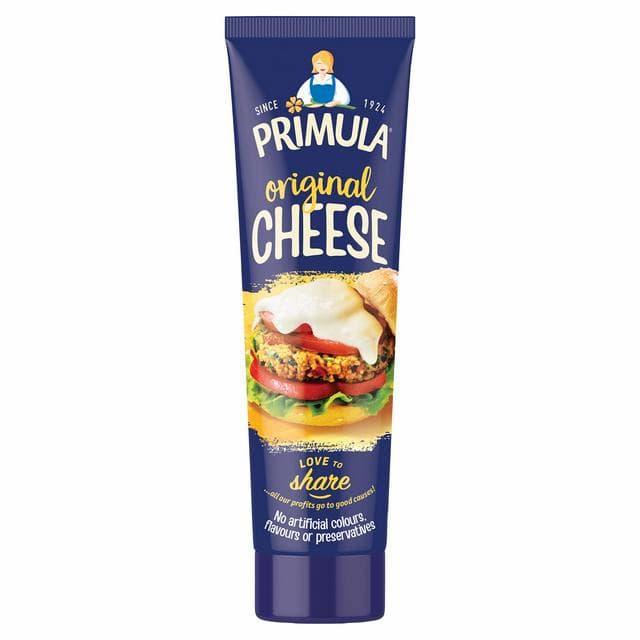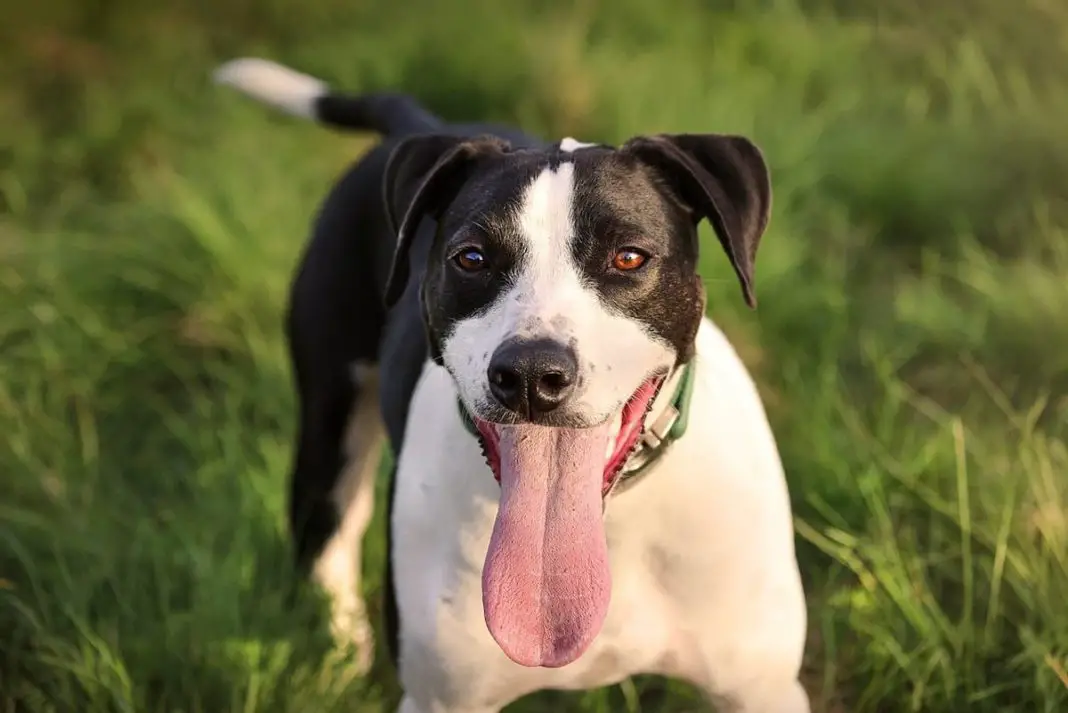Can Dogs Eat Primula Cheese?
In short, yes, a dog may eat primula cheese. But let’s be honest: primula cheese isn’t a healthy snack for your dog by any stretch of the imagination.
Not only is primula cheese quite high in fat and cholesterol, it’s also very high in salt.
So, if you do decide to give your dog some primula cheese, you should only give it sparingly.
The rest of this article will be a deep dive into primula cheese.
What Are The Ingredients Of Primula Cheese?
- Cheese (57%) (milk)
- Reconstituted skimmed milk powder
- Whey powder (milk)
- Emulsifying salts (sodium phosphate, triphosphates, polyphosphates)
- Modified maize starch

Is There Anything Good About Primula Cheese For Dogs?
We normally go through any positive nutritional aspects of the food, however, it’s hard to do that with primula cheese as there is little good nutritional content.
I think the advantages of primula cheese have little to do with its nutrition and everything to do with the fact that it’s in a tube, making it easier as this tasty dog treat is portable and it is convenient.
Having a snack that’s portable like primula cheese can be important as you probably take your dog around with you to lots of different places.
So, for example, if you were using primula cheese as a training treat, it would be a lot easier to take it to the park with you.
Not only is it portable, but it’s also convenient in that it’s easy to clean up.
It isn’t like using real cheese for a training treat, as real cheese needs to be cut up and stored in a container. Not to mention the clearing up that there is to do with that.
What Is Bad About Primula Cheese?
The bad stuff about primula cheese is the ingredients.
Primula cheese isn’t real food, as it’s highly processed.
Other than milk, it contains lots of additives and preservatives.
Consequently, it’s relatively high in fat and incredibly high in salt, none of which benefits your dog’s health.
Too much fatty products like primula cheese in a dog’s diet leads to issues such as obesity.
Too much salt in a dog’s diet can result in your dog having high blood pressure.
Another negative of primula cheese that isn’t great is that pound for pound it is so expensive.
Compared to other products such as real Cheddar from a popular brand, pound-for-pound will cost you a lot less.
How Much Primula Cheese Should I Feed My Dog?
My general advice about the amount of primula cheese that you should be feeding your dog is as little as you can get away with.
This is not only for the health of your dog but for the health of your wallet.
Not only does primula cheese contain a lot of calories, but if fed to your dog regularly, it may cause a dog to become addicted and your dog might start developing a habit.
You shouldn’t give your dog any more than grape-sized squirts of primula cheese, as opposed to golf ball-sized squirts.
And of course, you shouldn’t feed it to them too often.
Just a few squirts per week.
If you want to use primula cheese as a training treat, then use it in conjunction with other training treats.
Is Primula Cheese OK For Puppies?
While there’s nothing toxic in primula cheese, it’s still unhealthy, however, you can get away with using it every so often for a puppy.
The only concern with using products that have addictive substances with young dogs is that if they get too attached to a treat, it may put them off eating their main meal- which then leads to a slippery slope.
Conclusion
Cheese products such as primula cheese, cottage cheese, cheddar cheese, and mozzarella cheese can be a safe occasional snack for dogs, only when given in moderation.
Primula cheese contains a lot of calories, so giving your dog too much primula cheese could put the dog at risk of gaining weight—not to mention potentially causing digestive upset.
While primula cheese is often used to help with training, it should also be used with other treats.
If you’re looking to give your dog a tasty, protein-packed treat that will keep your dog occupied for a while, there’re much better options for your dog.








